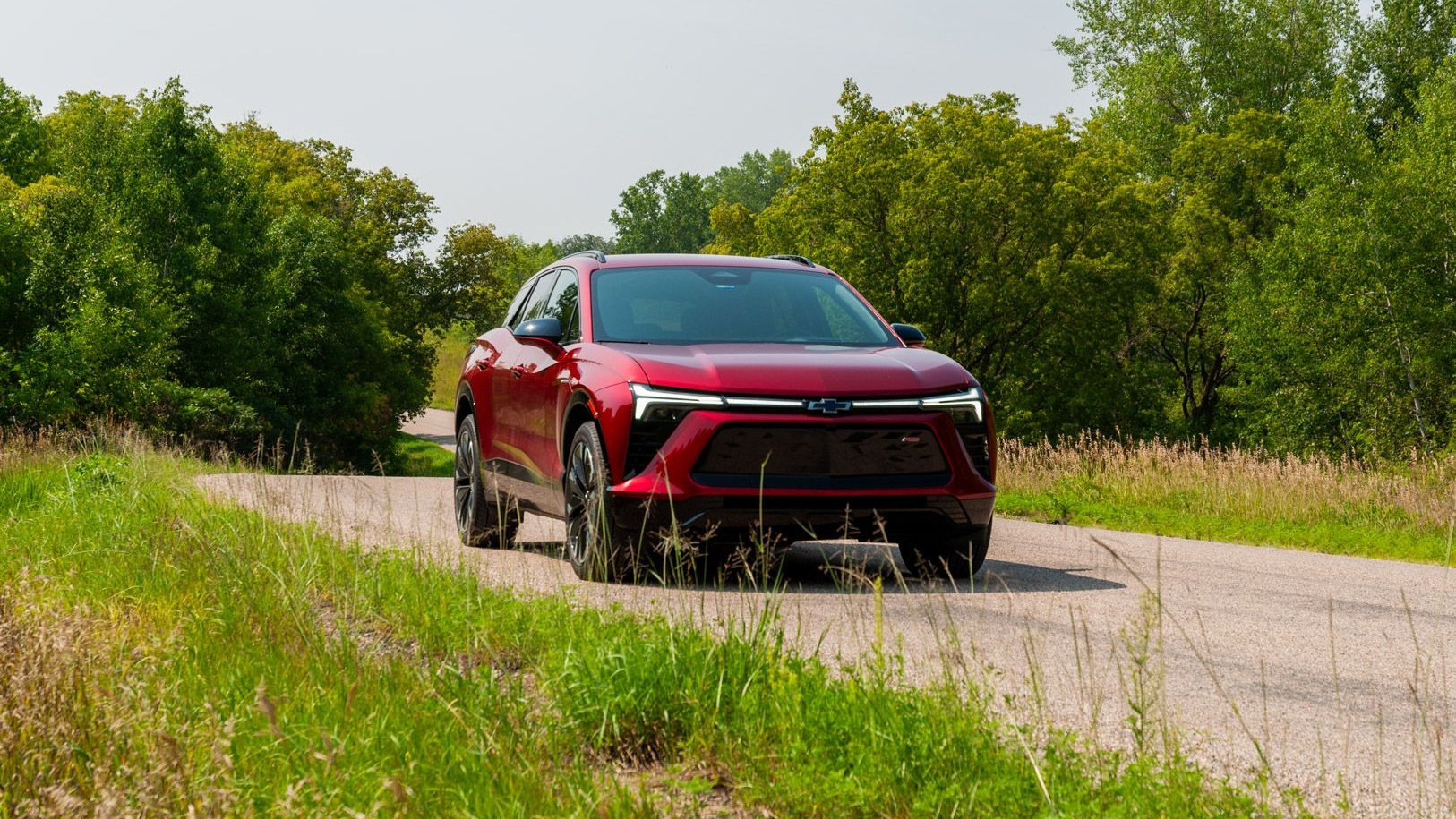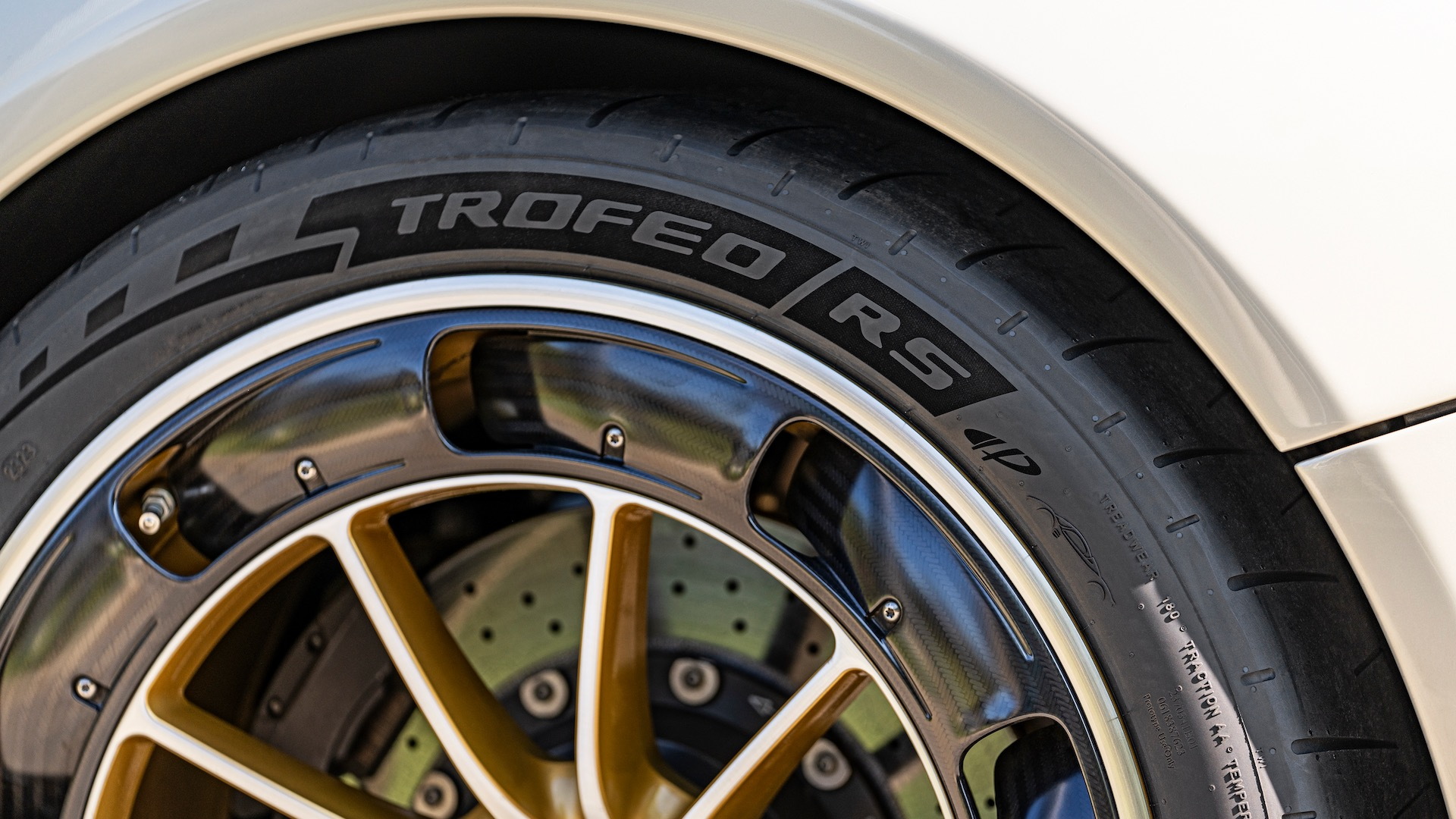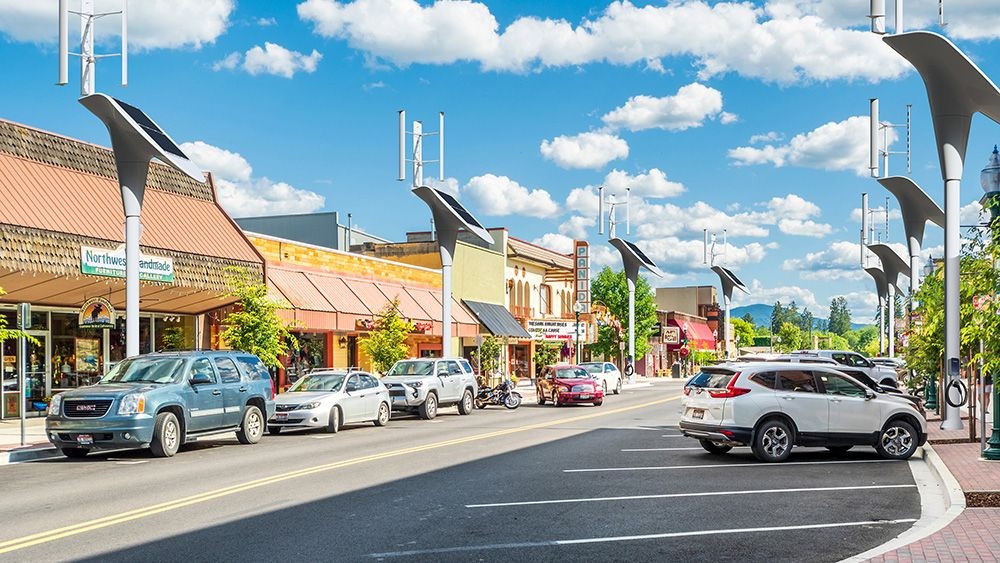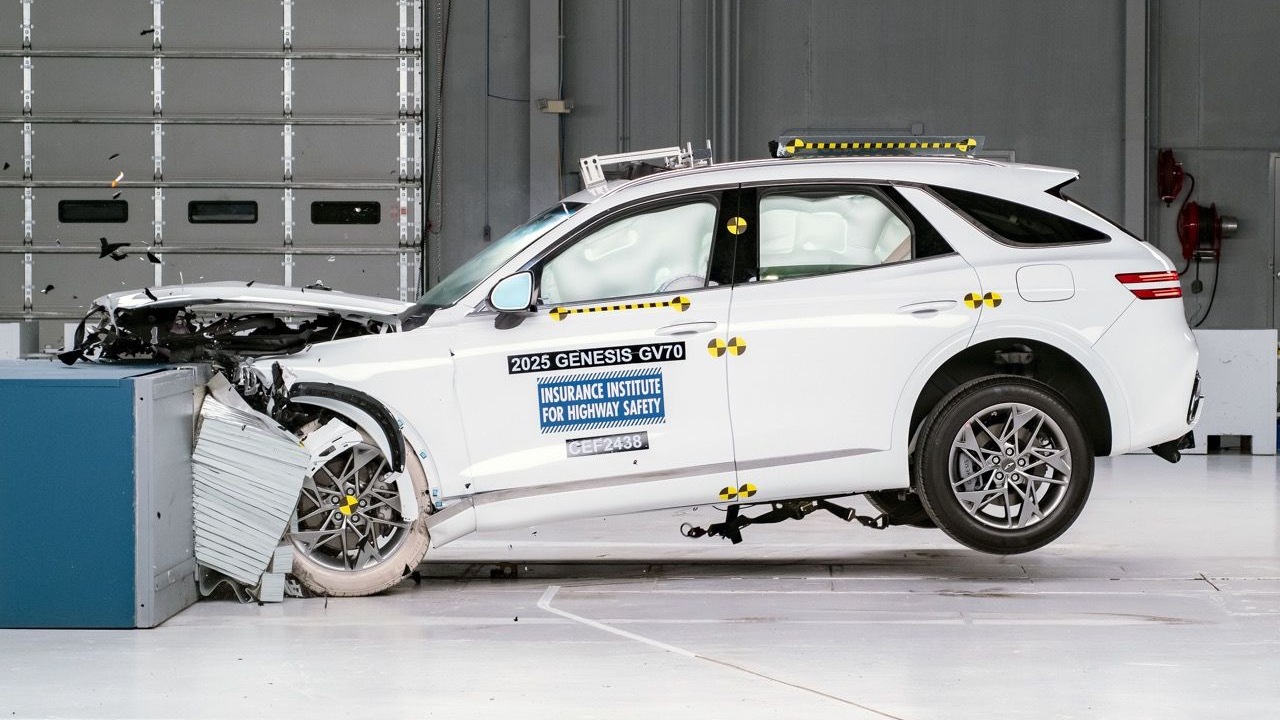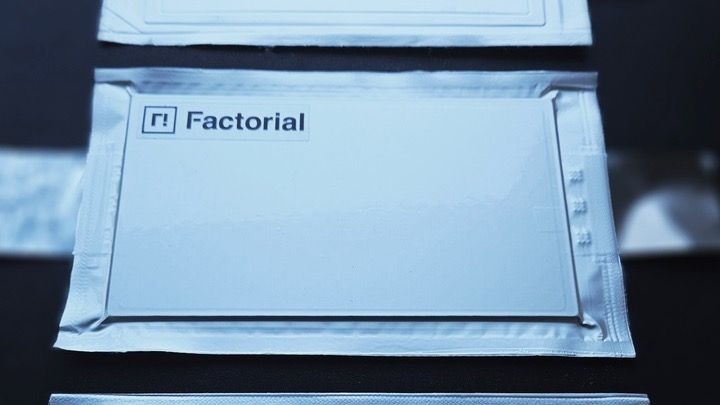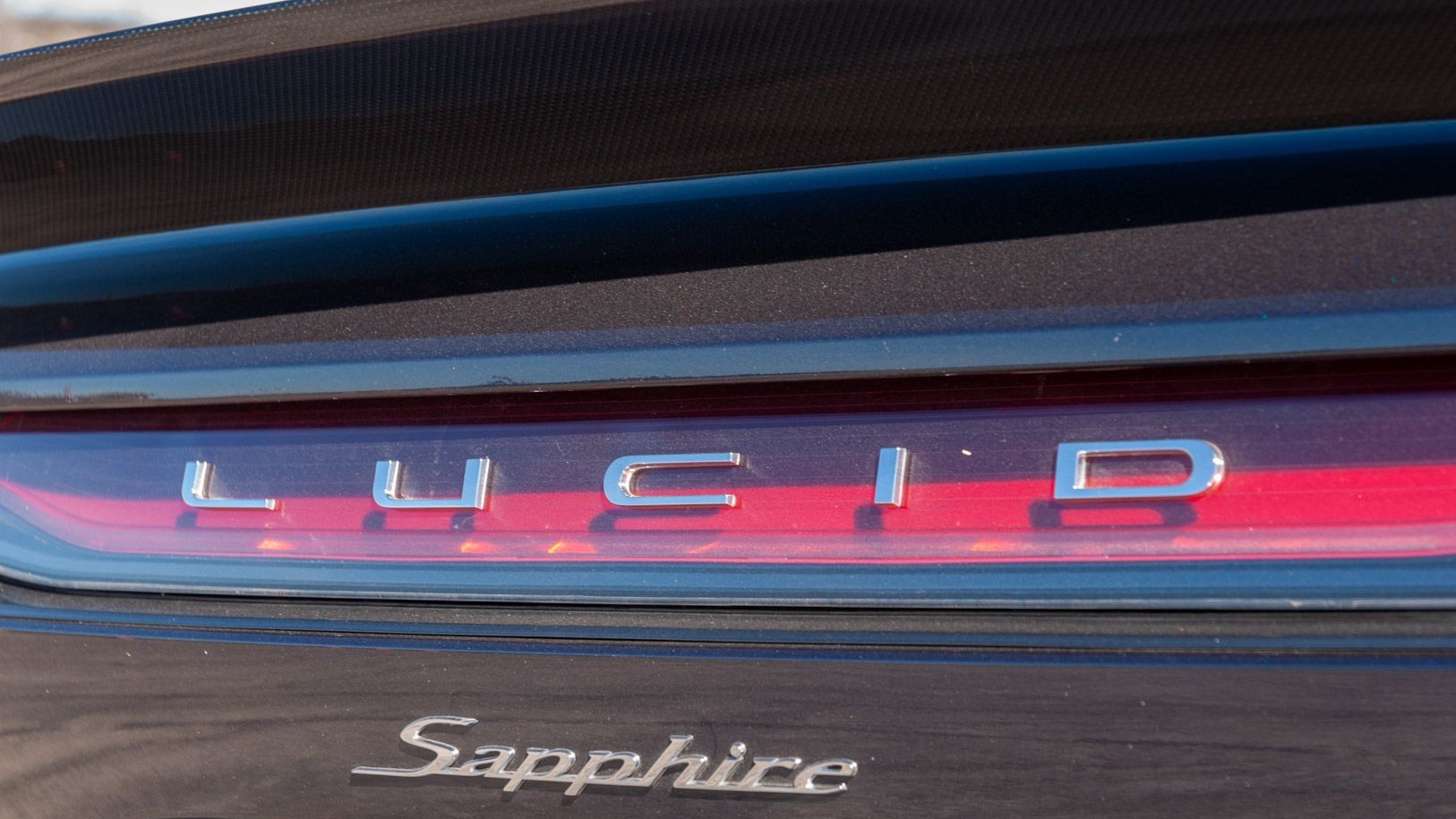- Modest changes arrive for the Tucson's exterior
- It's inside that counts: A new widescreen dash brings wireless smartphone connectivity
- Prices are up, of course: it's $34,510 for the cheapest 2025 Hyundai Tucson Hybrid
The 2025 Hyundai Tucson Hybrid is an updated version of the current Tucson in its fourth model year. Hyundai has revised and updated the interior and made a few modest exterior changes.
It also tweaked its hybrid system, making it slightly more powerful and splitting out a “Blue” version and a standard Hybrid—all fitted with mechanical all-wheel drive as standard. There’s also a Plug-In Hybrid version coming late this year, which we didn’t have a chance to drive.
Hybrids are a growing portion of Tucson sales, making up one out of every four Tucson sold last year—and Hyundai expects that percentage to grow. Automakers face increasingly stringent emission limits for cars in model years 2026 to 2035, and hybrids at attractive prices may be the easiest way to meet those goals. Hyundai will add more plug-in hybrids while it also rolls out 21 new electric vehicles in the coming years—and it will build both at its new Georgia "Metaplant" near Savannah.
We drove the new 2025 Tucson Hybrid through the rolling hills and canyons around Santa Barbara in late August. We found it hard to fault on most levels, and we expect the hybrid option to take a growing portion of sales in the compact-SUV category that’s now the largest single U.S. market segment. (Yes, bigger than full-size pickups.)
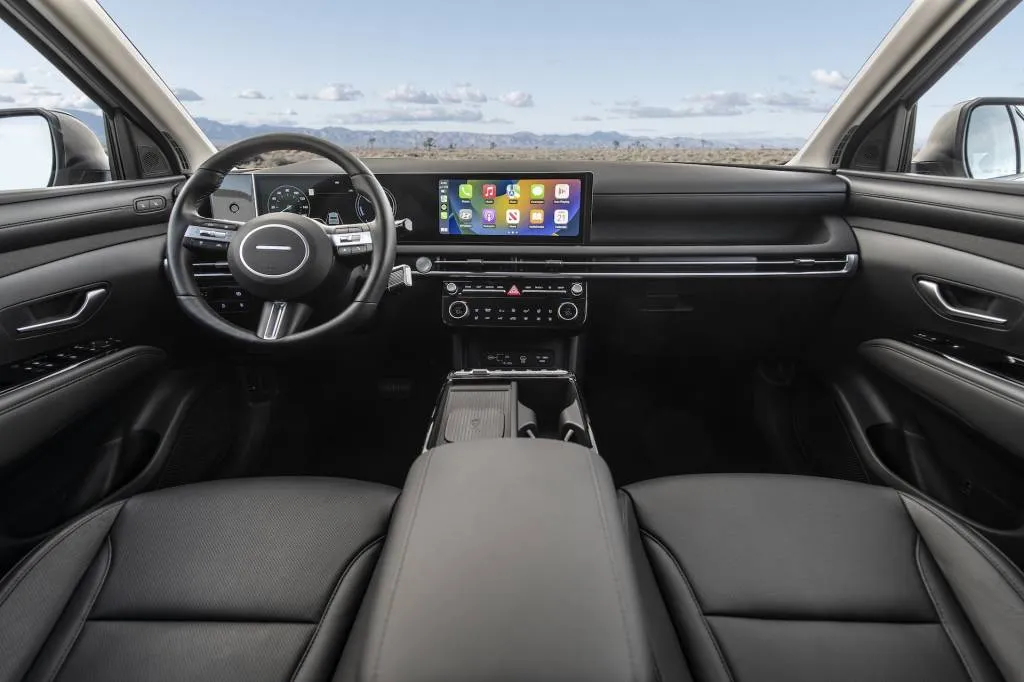
2025 Hyundai Tucson (PHEV interior)
Hyundai Tucson Hybrid: Big changes inside, not so much outside
From the outside, you may be hard-pressed to tell the difference between a 2025 Hyundai Tucson Hybrid and its 2024 predecessor. Hyundai made the grille and headlight design a bit more vertical and upright—to make the car “more dynamic” and show “toughness”—but the changes are apparent only if they’re parked next to each other. A new bumper cover with a skid shield adds less than half an inch to its length; all other dimensions stay the same.
The car’s streamlined shape and expressive, articulated flanks are meant to remind viewers of a racehorse in motion. That’s fine, though next to the more recent, slab-sided, Land Rover-esque Hyundai Santa Fe three-row utility, the Tucson now looks softer and perhaps a little dated.
Instead, the big changes for 2025 lay inside all Tucson trims. It gains the latest signature Hyundai dashboard: a pair of adjacent slightly curved 12.3-inch screens sitting atop a horizontal shelf that spans door to door. The left screen provides the driver with an instrument cluster; the center one is a touchscreen for both front-seat occupants to use. The layout has already been seen on the Ioniq 5 and 6 and the latest Santa Fe; it looks clean, crisp, and modern.
A flat tray now faces the front passenger, and the center console flows out of the dash down to about ankle level, where it offers a wide flat surface with a rubber pad to hold mobile devices. The armrest under front riders’ elbows has a bin underneath; ahead of that is a wider area with two larger cupholders plus a flat pad for charging phone. That leaves enough room between the upper console and the dash for riders to reach whatever’s in the lower-level trays.
All in all, it’s a very usable interior with plenty of room for stuff, from water bottles to phones to notepads to purses. Laudably, Hyundai listened to consumer feedback, and brought back actual knobs and buttons for ventilation and audio control. It also replaced a pushbutton drive selector on the console with a rotating lever on the column—again, as in the Ioniqs and Santa Fe.
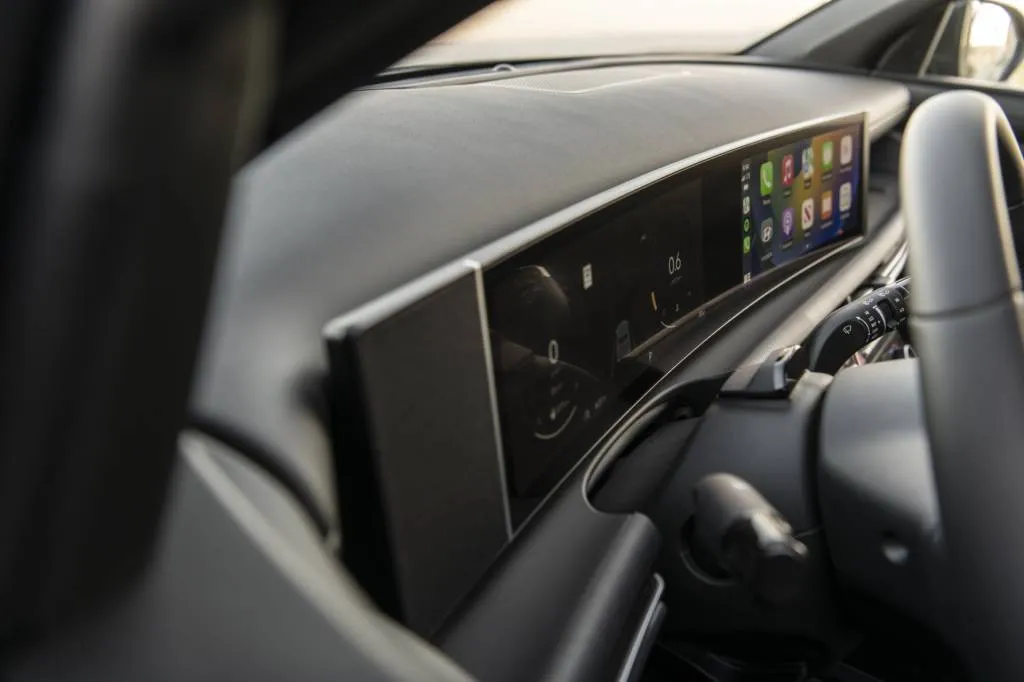
2025 Hyundai Tucson XRT
Hyundai Tucson Hybrid:Slightly more powerful—and ‘Baby Mode’ too!
As before, the engine in the Hybrid (and PHEV) Tucson is a 1.6-liter direct-injected inline-4, paired to a 6-speed automatic transmission. Between engine and transmission is a 47.7-kw (64-hp) electric motor. Total output of the combined powertrain is 231 hp, up 5 hp from last year’s model—due to a slightly higher power output from the 1.5-kwh lithium-ion battery, according to senior manager of product planning Andre Ravinowich.
On the road, the electric motor provides enough instant power to let the 2025 Tucson Hybrid keep up with traffic without sounding strained. Power delivery is almost always smooth, regardless of whether it’s engine, battery, or both powering the wheels. In most cases, the engine switching on was imperceptible, or almost. It’s still a shock to feel the transmission upshift or downshift several times while the car is running on battery alone—matching motor speed to road speed—but that’s a necessary drawback of Hyundai’s single-motor hybrid system.
Still, the Korean maker has put a prodigious amount of effort into refining that drivetrain, and the software algorithms that control it. And it’s paid off. Late in 2010, this reporter drove an early 2011 Hybrid Sonata whose powertrain was so unpleasant we never wrote the review. The company has come a very long way since then. (Contrast that to Mazda’s new plug-in hybrid system, which was as unpleasant to drive as that first hybrid Sonata.)
The hybrid Tucson now includes a “Baby Mode” feature in the powertrain control software. It uses the electric motor to smooth out both sudden acceleration and deceleration, making it more comfortable for a baby riding in the back in a rear-facing seat. It uses slight applications of motor power or regenerative braking in the same way to modulate lane changes, evasive maneuvers, and even vehicle pitch.
The twisty canyon roads and rural lanes north of Santa Barbara showed the Tucson Hybrid is set up for comfort over sporty precision. That’s not bad, but over irregular road surfaces and through rippled turns, it can get a little jouncy—the price of a comfortable ride. Should this matter to shoppers who will likely buy the thing? It probably won’t. TL/DR: The Tucson Hybrid is comfortable in almost every circumstance, but you won’t beat a BMW through the curves—and it’s not trying to do that.
Hyundai hopes for a Top Safety Pick+ rating from the Insurance Institute for Highway Safety (IIHS). Last year’s model earned that designation, so it seems a reasonable aspiration.
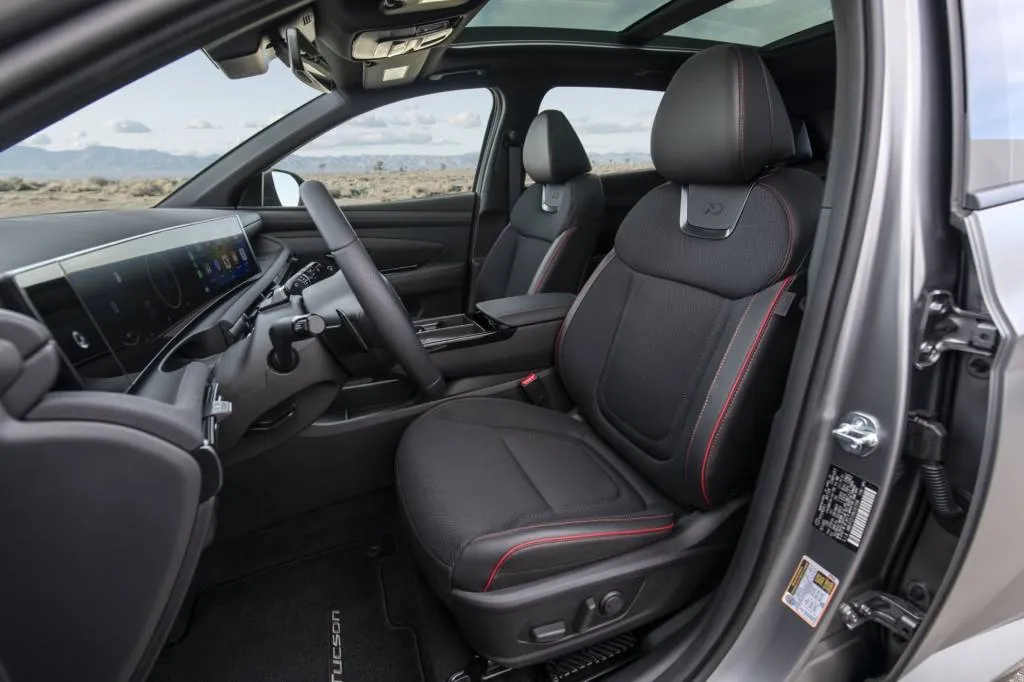
2025 Hyundai Tucson N Line
Hyundai Tucson Hybrid: Quiet cabin, appealing trim, best rear legroom
While the front seats are comfortable, it’s the rear compartment that gives the Tucson its edge. It has a longer wheelbase than any other compact hybrid SUV, meaning rear passengers benefit from a larger door opening and a rear seat positioned further back. This gives it, says Hyundai, 41.3 inches of rear legroom, the most among major competitors—and headroom (40.5 inches) equal to the best of the rest. We sat in the back, and we have to concur.
Materials are pleasant, with good-quality soft-touch surfaces and attractive plastics. The new dash makes the cabin feel airier and more open, and that’s a good thing, especially if your interior is all-black. Options for interior colors are black, grey, and a three-tone green and gray (more attractive than it may sound). Two new paint colors—a very dark Atlantis Blue and an olive-like Rockwood Green—liven up an otherwise predictable array of white, black, and no fewer than four grays and silvers.
Noise suppression is exceptionally good, and cabin noise is minimal for a car in this class. The one exception is the electric parking brake, which was exceptionally loud either engaging or disengaging. It’s particularly noticeable because there’s rarely any engine noise to mask it.
Part of the redesigned interior brings Hyundai’s latest multimedia system, capable of updates over the air. As always, every Tucson version gets the top-rated Hyundai BlueLink+ connectivity package. Unlike other makers (GM, cough), Hyundai has pledged to keep that connectivity free as long as the first buyer owns the car. Over-the-air updates to the system are free for the first three years. Device mirroring via Android Auto and Apple CarPlay remains standard as well. Certain models offer Hyundai Pay, digital-key capability, and more advanced functions.
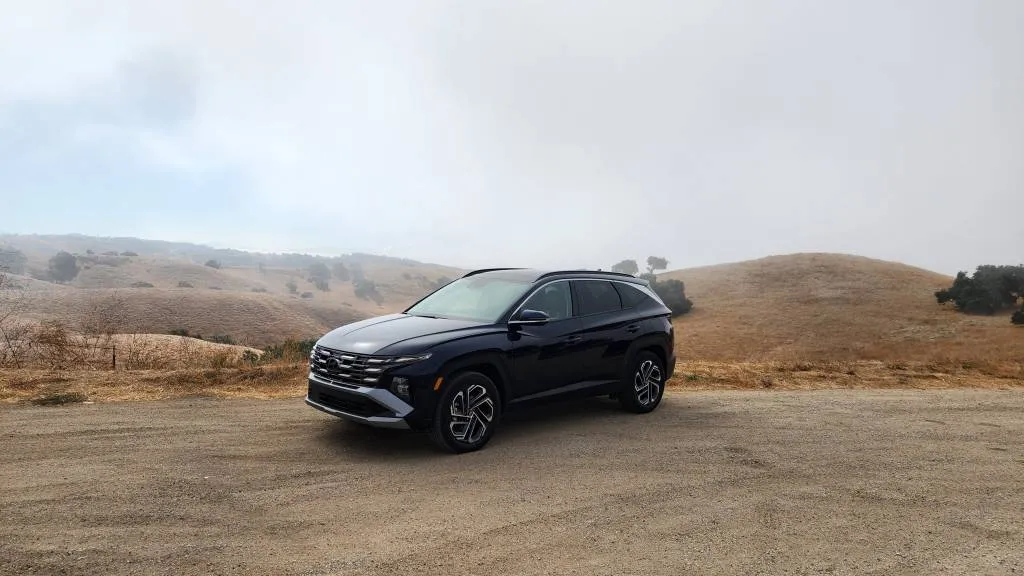
2025 Hyundai Tucson Hybrid
2025 Tucson: Prices range from $34,000 to $42,000
The 2025 Hyundai Tucson Hybrid comes in four trim levels, all with AWD. They start with the base Blue at $34,510. The SEL Convenience version adds $3,000, and the N Line appearance package an additional $1,750. Starting at $42,340, the Limited tops off the range with 19-inch alloy wheels, a panoramic sunroof, heated and cooled seats, a Bose 8-speaker audio system, a shift-by-wire column-mounted shift selector, and a head-up display. All prices include the mandatory $1,395 delivery fee.
(The plug-in hybrid Hyundai Tucson costs at least $40,775 for 2025, by the way.)
Road tests by auto reporters can be quite unlike regular use, so we didn’t draw any conclusions on real-world fuel economy. Compared to the conventional version, the Tucson Hybrid SEL boosts the EPA fuel-economy rating from 26 mpg (AWD) or 28 mpg (FWD) to 35 mpg combined (it comes standard with all-wheel drive). That’s not quite equal to the Toyota RAV4 Hybrid (41 mpg combined) or the Honda CR-V Hybrid AWD (37 mpg combined), but it’s enough to save you several dollars of gasoline every 100 miles. The entry-level Tucson Hybrid Blue does better, at 38 mpg combined, at the cost of losing some niceties like leather trim and a standard 12.3-inch display in front of the driver (it’s optional).
Hyundai provided airfare, lodging, and meals to enable Green Car Reports to bring you this first-person drive report.







